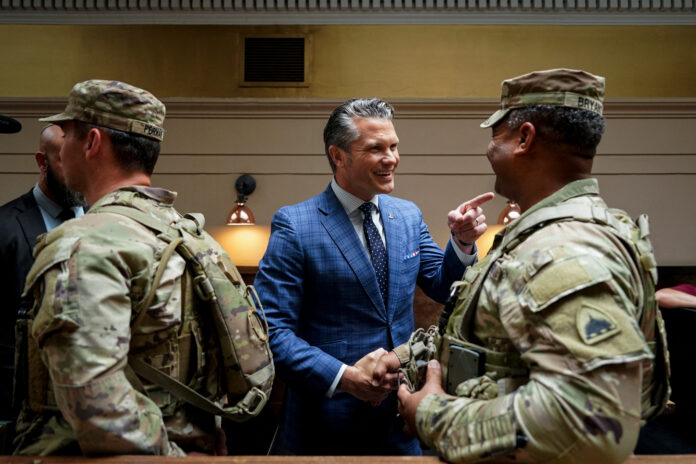A high-level gathering of American generals near Washington raises more questions than answers. As Trump tightens his grip on the military, observers are left to speculate: what war is being prepared, and where?
A Quiet Convocation of Power
On Tuesday, September 30th, 2025, hundreds of U.S. military leaders—generals, admirals, and high-ranking commanders from around the globe—were hastily summoned to a military base near Washington, D.C. The event, dubbed by insiders as a mysterious military meeting in Washington, was orchestrated by Defense Secretary Pete Hegseth under an unusually thick veil of silence.
No agenda was published. No public statements were made. No journalists were invited. Just a vague reference to a “speech before senior military leadership” buried in a Defense Department press release.
In Washington, such opacity is rarely accidental.
The Military as an Instrument of Internal Order
Since Donald Trump’s dramatic return to the White House in January 2025, America’s defense apparatus has undergone a sharp ideological realignment. The Pentagon is no longer merely tasked with projecting power abroad—it is being refitted to reimpose a domestic order that the administration clearly believes is under threat.
The use of U.S. troops in several American cities—long taboo in a country that once prized the separation of civil and military spheres—has become a defining feature of the Trump-Vance second term.
Meanwhile, internally, the Department of Defense has morphed into what some insiders now call the “Department of War.”
Targeted Purges and a Leaner High Command
The shake-up has not stopped at symbolism. Since spring, Defense Secretary Pete Hegseth has ordered the dismissal or forced retirement of dozens of top officers, reducing the number of four-star generals and admirals by at least 20%.
The civilian workforce is also being trimmed by 5%, a move framed as cost-cutting but widely interpreted as a political purge disguised as reform.
In February, Trump unceremoniously fired Joint Chiefs Chairman Charles “CQ” Brown—no explanation given. Also removed: the Chief of Naval Operations, the Commandant of the Coast Guard, the Air Force’s Vice Chief of Staff, and several senior military attorneys. A bloodletting not seen since the aftermath of Vietnam.
All this forms the backdrop to the mysterious military meeting in Washington—a moment that feels less like a conference and more like the quiet consolidation of command.
Trump’s Militarized Presidency
President Trump, ever the showman, offered only a cryptic endorsement of the event. “I love it,” he said last week. “Let him [Hegseth] mingle with the generals and admirals from around the world.”
This is not mere delegation, it’s strategic theater. Trump understands the symbolism of a loyal military elite gathered under one roof, out of sight, yet fully aligned with the new national vision.
Vice President JD Vance dismissed media interest in the gathering as “weird,” calling it “not unusual at all.” But this was an extraordinary deployment of personnel with no precedent in recent memory.
Weak Signals and Unspoken Agendas
What, then, are the real stakes?
Some suspect the meeting may prelude new global military operations—perhaps another escalation in the Caribbean, or a fresh round of strikes in the Middle East. Trump has already greenlit attacks on alleged drug shipments in the Caribbean and ordered strikes on Iranian nuclear sites and Houthi infrastructure in Yemen.
Others point to the possibility of a revised doctrine, one that treats internal unrest and border threats as part of a single continuum requiring coordinated response.
Among the subtle indicators: restricted airspace around the Quantico base, suspicious movement in defense stocks, and the unusual silence from key figures in the Joint Chiefs—hints that a shift is underway, though it remains below the official radar.
A Military in Transition, A Nation in Flux
Whatever the official narrative, this mysterious military meeting in Washington is a turning point in civil-military relations in the United States.
It reflects a deeper truth: the Pentagon is no longer insulated from politics—it is now a core pillar of the administration’s project of national reassertion.
The old norms, of transparency, of institutional balance, of political neutrality—are being quietly retired. In their place emerges a martial posture that is not only directed outward, but increasingly aimed inward, towards a fragmented American society where loyalty to the federal executive is being tested in the ranks of the armed forces themselves.



